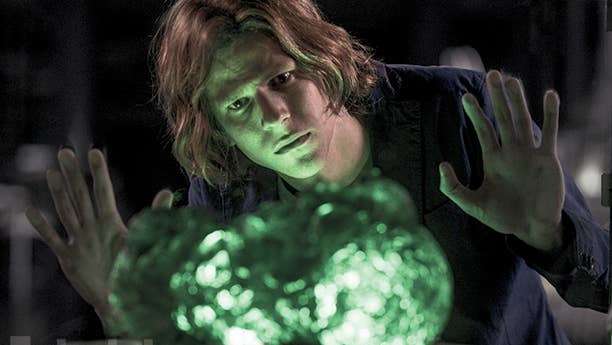Create a free profile to get unlimited access to exclusive videos, sweepstakes, and more!
Liquid glass is the newest bizarre state of matter to ooze into existence

Kryptonite and kyber crystals might seem like some of the most incredible naturally occurring substances in sci-fi (and on fictional planets), but things right here on Earth can get even weirder.
It’s not melted glass and neither solid nor liquid — but scientists have now discovered a new state of matter known as liquid glass. Its individual particles can move but not rotate. Liquid glass occurs in colloids, which have one substance dispersed through another, though neither substance can separate or settle like in solutions or suspensions. When certain colloids become dense enough, their structure gets screwed up into this glassy state. It will stay that way until the structure becomes ordered again.
Physicist Matthias Fuchs and chemist Andreas Zumbusch from the University of Konstanz in Germany induced the liquid glass state in a lab by using colloids that they created themselves. After using particles in a shape that has never been experimented with before, they wanted to see what happened during the glass transition and got something worthy of Superman or Star Wars.
“Suspensions of ellipsoidal colloids form an unexpected state of matter, a liquid glass in which rotations are frozen while translations remain fluid,” Fuchs and Zumbusch said in a study recently published in PNAS. “Image analysis unveils hitherto unknown nematic precursors as characteristic structural elements of this state. The mutual obstruction of these ramified clusters prevents liquid crystalline order.”
When Fuchs and Zumbusch took a closer look at this phenomenon, they faced one major issue. Any colloids studied until now had contained spherical particles that have no orientation. It’s impossible to tell where a sphere is facing, because it has no beginning and no end, unless someone wants the thankless task of painting microscopic arrows on each particle. What the scientists did instead was use polymer chemistry to produce small plastic particles (which were still larger than atoms or molecules) that they then stretched into an elliptical shape. These were then incorporated into a solvent to create a colloid.
Under an optical microscope, the particles showed changes in position and motion that revealed some never-before-seen arrangements that were almost unbelievable.
For a crystalline structure to form, it has to have just that — ordered structure. Glass is bizarre because it may feel solid but is actually neither a solid nor a liquid. You may notice that the bottom of an older windowpane is just slightly thicker than the top because glass oozed downward extremely slowly. Some liquid crystals become nematic after reaching a glassy state. This means the molecules are parallel, and while they are able to float around, they cannot rotate. This inability to rotate means that they cannot maneuver and rearrange themselves the right way to achieve a solid crystalline structure.
Liquid glass with ellipsoid particles is a better reflection of what actually happens in nature or technology. You don’t get too many occurrences of perfectly spherical particles in either situation, and if that did happen, the particles’ lack of orientation would only make simulations and actual occurrences of this strange state of matter more difficult to study. Changing the concentrations of the particles allowed the scientists to see shifts in movement and rotation that would have otherwise eluded them. They saw that glassy states occurred at specific densities when rotation froze.
This doesn't mean crystal formation is doomed. Liquid glass will only last so long as the particles in the colloid, stuck in a similar orientation, form clusters and get in each other’s way. When particles have enough energy, plus the right pressure and volume, to rotate again, they go from a liquid glass state to a liquid crystal as they start to rearrange themselves in the right order.
“The liquid glass state may give the long-sought paradigm where the interplay between equilibrium critical correlations and critical slowing down versus glass formation can be studied microscopically,” Fuchs and Zumbusch said.
So does this happen to kryptonite as it crystallizes, or what? Only an actual Kryptonian would know the answer.














